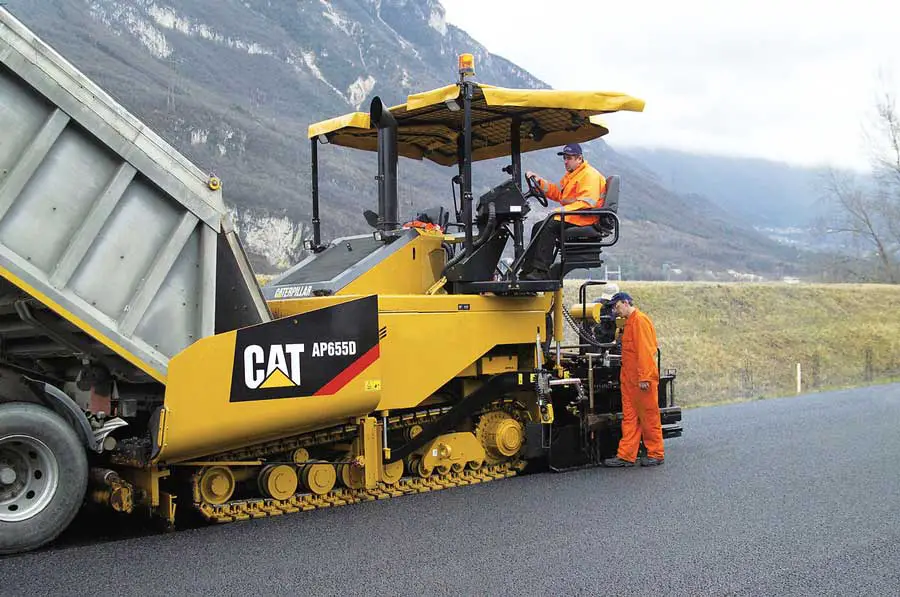Cranes are the most common form of transportation often used on construction projects.
The working principle of this crane is to lift certain objects or materials which will then be moved and then move the material horizontally and lower it to the desired location.
In the lifting industry, there are several types of cranes that are commonly used.
Crane Types
There are several types of cranes that are most commonly used in the lifting industry, including:
1. Truck crane
Crane trucks, also known as mobile cranes, are a type of crane that can move without the help of transportation equipment, from one project to another. However, the crane part still needs to be disassembled to facilitate the transfer process.
The crane truck has the advantage of being able to rotate up to 360 degrees. In addition, to maintain balance, this type of crane has legs. When operating, it is necessary to hold the legs of the crane and then lift the wheels to keep the operation safe.
2. Tower crane
A tower crane is a tool for lifting objects or materials both horizontally and vertically to a high place with limited space for movement.
This type of crane is divided according to the way the crane is located, that is, cranes that can be free, cranes that can be added to buildings, climbing cranes, and cranes that are on rails.
3. Lifting crane
Lifting cranes are a type of lifting aircraft generally found in workshops and warehouses. This type of crane is usually placed on the roof and runs on special rails. Where the rails can also move back and forth in one direction.
4. Hydraulic crane
This is a type of crane that can generally only be applied to a warehouse or workshop scale. This type has a fairly simple structure but is less flexible when it comes to moving on to another point.
With a limited reach, this type of hydraulic crane does not have a long reach. Also, it can only rotate 180 degrees.
5. Crawler crane
The crawler crane is a kind of construction tool for the transportation of heavy goods and has a transportation range. This type of crane is more widely applied in construction projects through not so long reach.
The wheels have been fitted with chains, allowing the crane to move when applied to various terrains.
6. Luffing crane level
This type of crane is commonly seen in the harbor area. By having hinged brackets, this crane can move up and down.
With this movement, the arms contained in the crane can enter and exit. It is generally used to place containers. It can also be applied to unload cargo on ships.
7. Port cranes
By the name itself, you can already guess if this tool is applied as a port helper. This is so because this tool is often used to load and unload ships coming from the port.
8. Telescopic handler crane
This type of crane is generally used in coal projects in the installation of the upper steel frame and various other functions. The telehandler crane also has a forklift part at the end of the pump.
In addition, it also has an outcast at the base. Of course, this crane can rotate up to 360 degrees.
9. Floating crane
The floating crane is a kind of crane necessary for the construction of ports and bridges. In addition, this type of crane is also applied for unloading and loading ships.
It can be said that the capacity is quite large because it can reach 9000 tons. In addition, the tool can also be used to lift boats.
10. Air crane
This type of crane is commonly known as an overhead crane. The shape is almost the same as that of a helicopter.
In addition, it is often used to achieve difficult goals. This tool is usually equipped with a cable. The cable is installed to hang objects as a load to be taken.
Hoist Types
In addition to cranes, hoists are also often used in the lifting industry. Hoist according to the English dictionary, means pulley. Based on this, it can be concluded that a hoist is a tool for lifting and moving goods.
The lifting crane type itself is included in the crane tool for indoor and outdoor applications. This type of crane can be applied to lift loads or goods in a horizontal or vertical position.
The lifting force capacity of this tool is obtained based on changes in mechanical, pneumatic, hydraulic, and electrical energy. The following are various types of hoists based on the movement and operation mechanism, as follows:
1. Wire Rope Hoist
This type of hoist is often found in the manufacturing, power generation, mining, construction, and storage industries.
This type of hoist uses a steel rope or sling that is attached to the drum to connect to the gearbox and to the motor so that it can rotate.
Also, you can move the load down or up. To support the load and keep hanging at a certain height, a brake is used which is useful when the electrical supply to the hoist motor is cut off or disconnected.
Generally, this type of hoist is produced in standard capacities, from a capacity of 1 to 8 tons. This type generally consists of the monorail, double girder hoist, and stationary.
2. Electric Hoist
This type of hoist is used to lower and lift loads using electrical energy. This tool can use a chain for the lifting gear.
Also, this type is usually equipped with a chain on a drum equipped with a chain guide.
Inside the drum, an electric motor and a gearbox have been connected so that it can rotate to raise or lower the load.
3. Pneumatic Hoist
The air hoist is a type of hoist that uses the necessary air pressure to lift a load. Typically the operator operates this tool through the pendant when raising or lowering the load.
4. Hydraulic Hoist
This type of hoist uses an oil-based piston mechanism that works according to Pascal’s law. In the sense that the pressure that has been given to a liquid in a closed space will be transmitted in all directions.
Those are the 4 types of hoists and their respective functions and how they work that you need to know. Now, do you know the difference between a hoist and a crane?
Difference Between Hoist and Crane
1. Based on The Definition
The difference between the first hoist and the crane is of course seen in the definition of the two. Where the hoist is a kind of lifting aircraft and it is generally widely applied for lowering and lifting loads vertically.
Whereas the crane itself is a system that is built and designed to support the operating system as well as the mobility of the hoist itself. In some cases, customers only need a lifting device just to replace the existing unit.
2. Based on The Working System
The difference between a hoist and a crane of its own working system is that the hoist itself has 2 working systems, including an electric hoist and a manual hoist.
Of course, the manual hoist is relatively inexpensive in price, it can be said that the weight is not as heavy as that of the electric hoist, so it is very suitable in areas that have no power supply.
3. Based on The Types
The difference between hoists and cranes according to the type or type is divided into 2 types, namely, wire rope hoist and chain hoist. Both types have their own advantages. What they have in common is that hoist maintenance is very easy.
4. Based on The Needs
The difference between hoists and cranes lies in their movement, usually, the movement of the lifting system can be selected based on the needs, either in the form of a fixed type used in load lifting applications, workshops, and warehouses.
There is also a 4 point type that is used in monorail crane applications. While the crane itself has many types, the function is the same, that is, moving and lifting heavy loads.
Developers and contractors can use the difference between the hoist and tower cranes to construct high-rise buildings such as shopping malls and office buildings. While the crane itself has advantages in terms of mobility.
In addition, there is also a special auto crawler crane as a type that can operate in places or terrain that are quite difficult.
In the industrial world, lifting cranes are used by entrepreneurs in the food and beverage industry, manufacturing, workshops, warehouses, and others.
Lifting cranes have many systems, such as gantry cranes, bridge cranes, jib cranes, monorails, and semi-gantry cranes. The basic difference between a hoist and a crane is that the construction design is built and designed to suit field conditions and customer needs.
Based on the explanation of the difference between hoist and crane above, it can be concluded that the two are inseparable units.
Because the cranes can be said to be custom, it would be best if you plan to build a new building with a hoisting crane installed.



